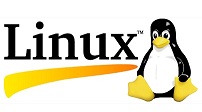 Professional Training &
Professional Training &
100% Projects Based Training

100% Projects Based Training
Diploma In Linux Course
Linux basic concepts & installations
- Installation in Standalone Machine
- Installation through NFS
- Installation through FTP
- Installation through HTTP
- Installation through KICKSTART
File System Management
- Creation of File Systems
- Understanding EXT2, EXT3& EXT4 File Systems
- Converting Ext2 to Ext3 file systems
- Reverting back from Ext3 to Ext2 files systems
- Understanding fdisk,e2label, mount, umount commands
- Understanding fstab and mtab files
- TROUBLESHOOTING
User management
- Understanding different types of groups and creation of groups
- Creation of users in different groups
- Understanding Passwd, Shadow Files
- Understanding passwd aging
- Creation of quotas for users, groups and file systems
- Understanding users security files
- The different commands for Monitoring the users
- TROUBLESHOOTING
Run levels
- Understanding the different types of run-levels
- Understanding different types of shutdown commands
- Understanding run control scripts
- Understanding the different types
Network file system (NFS) :
- Understanding NFS server and NFS clients
- Understanding daemons and files in NFS of boot phases
- Configuring NFS server and different NFS clients
- Configuration of autofs, NFS security
File transfer protocol :
- Understanding the features and advantages of FTP server
- Configuring FTP server and FTP clients
- Configuring FTP server for anonymous and real users with download and upload permissions
- Configuring FTP user access, FTP security
- Understanding FTP Basic Commands
- Configuring of anonymous FTP Server
XINETD :
- Understanding xinetd based and non xinetd based services
- Configuring xinetd based services
- Xinetd security
TCP WRAPPER :
- Understanding TCP WRAPPER
- Configuring TCP WRAPPER for services
Domain naming service :
- Understanding DNS service and different types of DNS servers
- Configuring DNS (master) DNS (Slave)
- Understanding & Configuring forward (DNS) and cache (DNS) of boot phases
- Understanding different types of files when the system is booting
- TROUBLESHOOTING
Logical volume manager (LVM) :
- Creation of file systems and converting into LVM
- Creation of physical partitions
- Creation of volume groups
- Creation of logical partitions
- Extending the volume group
- Extending the logical partitions
Package Manager (RPM) :
- Understanding the features and advantages of RPM
- Installation of RPM packages
- Upgradation of RPM
- Verification of RPM
- Q u e r y i n g , T R O U B L E SHOOTING
Backup and recovery :
- Understanding different types of file system backup
- Understanding different types of files backups
- Understanding different types of file system backups
- Understanding different types of dump levels
- Understanding monthly, weekly, daily backups
- Different types of backup strategies
Automation of jobs :
- At Jobs . Cron Jobs
Network information service:
- Understanding NIS and daemons at NIS (Server, Slave and Clients)
- Configuring NIS (master), NIS (slave) and NIS clients in heterogeneous environments
- Integrating NIS (master and slave) with NFS Server
Dynamic host configuration protocol :
- Understanding DHCP
- Configuring DHCP server for different DHCP clients
APACHE :
- Understanding APACHE
- Configuring APACHE web server with virtual hosting
- Configuring APACHE web server with IP BASED, HOST BASED and PORT BASED
- Configuring member logins for APACHE web server
SAMBA :
- Understanding the features and advantages of SAMBA server
- Configuring SAMBA for heterogeneous environment
- Sharing the resources between unix to unix using SAMBA
- Sharing the resources between windows to unix (vice-versa)
- SAMBA security
SQUID :
- Understanding SQUID proxy
- Configuring SQUID proxy with ACL
Raid levels :
- Understanding RAID LEVELS
- Configuring different types of RAID LEVELS (0,1and5)
Linux Training center in West Delhi, Uttam nagar. Best certified computer course curriculum for professional learning institute near Dwarka, Uttam Nagar, Jankapuri, Tilak Nagar, Subhash Nagar, Tagore Garden, Rajouri Garden, Ramesh Nagar, Moti Nagar, Kirti Nagar, Shadipur, Patel Nagar, Rajendra Place, Karol Bagh, Jhandewalan, Ramakrishna Ashram, Connaught Place, vikaspuri, najafgarh, Delhi Cantt, Dhaula Kuan, Palam Colony, Palam Villag, Dabri, Hari Nagar, Fateh Nagar, Raja Garden, Punjabi Bagh, Shivaji Park, Paschim Vihar, Peeragarhi, Inderlok, Netaji Subhash Place, Pitampura, Rohini, Chandni Chowk, New Delhi, East Delhi, North Delhi, West Delhi.










